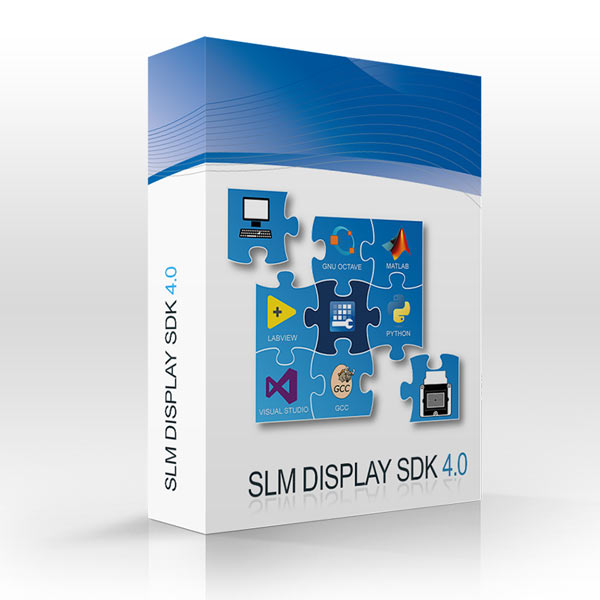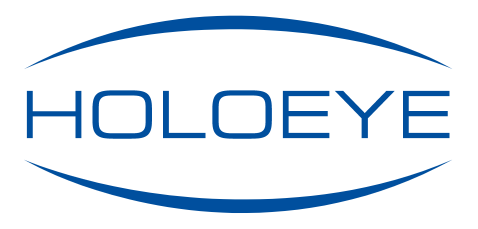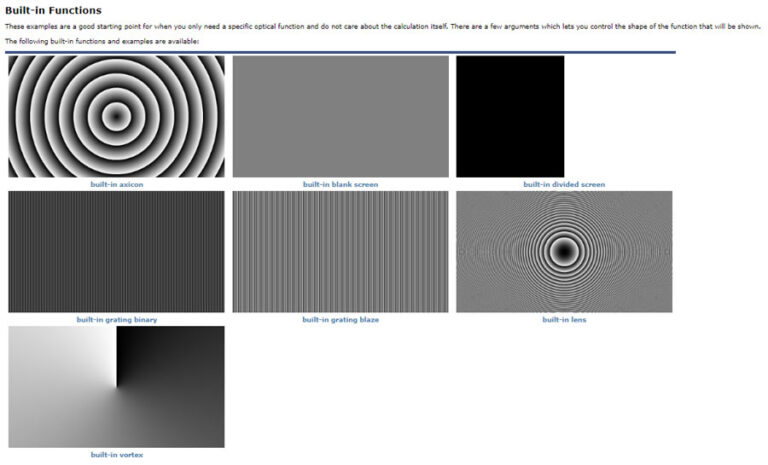SLM Display SDK

The HOLOEYE SLM Display Software Development Kit (SDK) is an interface to show images and data/phase arrays directly on the SLM from within many programming languages. It also supports some data manipulation functions like phase overlay calculated from Zernike coefficients, optical beam manipulations, and data transformations.
In order to make any use of this SDK, you need to have a supported development environment installed. Currently supported development environments are:
- C or C++ compiler (e. g. Microsoft Visual C++ Compiler)
- National Instruments LabVIEW 2011 and later
- MathWorks MATLAB R2009b and later
- Octave 7.2
- Python 2.7 and 3.x
The current version is available for Microsoft Windows 64 bit versions Windows 10 and above. The SDK supports all current HOLOEYE Spatial Light Modulators with resolutions up to 4160 x 2464 pixel.
SLM Display SDK Features
The initialization of the SLM within the target platform is only a single line of code. Data can be transferred to the SLM from floating point or integer type data arrays containing phase data or image data. The SLM display SDK also supports upload and display of data stored in all common image file formats on your computer.
- Show phase-data-arrays (float, double)
- Show data arrays (float, int, double)
- Show data from image files (*.png, *.bmp, …)
The SDK also includes built-in speed-optimized commands for the display of essential functions (e.g. lenses, gratings) on the SLM.
- Show built-in functions, like:
- Gratings (Binary / Blaze)
- Phasefunctions (Lens, Axicon, Vortex)
- Divided screen
Advanced API Functions
Besides the generation of CGHs a wide range of basic optical functions can be created directly via the menu bar. After input of the required parameters the output image appears in a new window. There are several binary and multilevel optical functions possible:
The SDKs advanced API permits sophisticated management of data uploaded to the graphics adapter’s RAM and provides detailed information about the timing when actually displayed on the SLM at high frame rates.
- Load functions to upload data to the GPU memory:
- Load phase-data-arrays (float, double)
- Load data arrays (float, int, double)
- Load data from image files (*.png, *.bmp, …)
- Fast accurate „slideshow“-playback
- Access playback timing statistics for detection of latencies
- Load functions to upload data to the GPU memory:
To get access to the SLM Display SDK, please register at our download website.
System Requirements
HD Resolution Devices
(LC 2012, PLUTO, PLUTO-2 & 2.1, LETO-3, ERIS):
Minimum Requirements:
Processor: Dual core CPU with 2 GHz (e. g. Intel Core 2 Duo E6320)
Memory: 2 GB
Graphics Card: DirectX 11 capable GPU with minimum 256 MB Video RAM (e.g. Nvidia Geforce 7800 GT or built-in Intel GPU or equivalent)
Recommended Requirements:
Processor: Quad core CPU with 3 GHz (e.g. Intel Core i5-2500)
Memory: 8 GB
Graphics Card: Nvidia or DirectX 11 capable GPU with 2 GB Video RAM (e.g. Nvidia GTX750)
Ultra HD Resolution Devices
(GAEA-2):
Minimum Requirements:
Processor: Quad core CPU with 3 GHz (e. g. Intel Core i5-4690)
Memory: 8 GB
Graphics Card: DirectX 11 capable GPU with minimum 2 GB Video RAM and HDMI 2.0 output (e.g. Nvidia GTX950 or similar)
Recommended Requirements:
Processor: Quad core CPU with 4 GHz (e.g. Intel Core i7-7700k)
Memory: 16 GB or more
Graphics Card: Nvidia or DirectX 11 capable GPU with 8 GB Video RAM and HDMI 2.0 output (e.g. Nvidia GTX1070)

